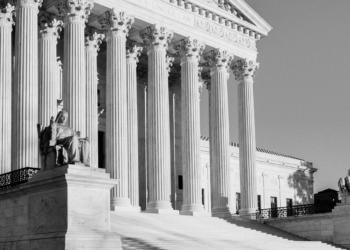The two Georgia prosecutors highlighted the names of black jurors in green. They were the only jurors highlighted. In case there was any misunderstanding, a helpful key was at the top of the prosecutor’s copy of the jury list: “green = Black.” Unsurprisingly then, not a single black juror survived the state’s preemptory challenges in Timothy Foster’s murder trial in 1987.
On May 23, 2016, the U.S. Supreme Court decided in Foster v. Chatman, 578 U.S. ____ 2016, (2016) (slip op.) that such practices were unconstitutional and reversed a Georgia court’s denial of Foster’s habeas corpus petition that uncovered the racist practices. Despite the recent attention given to the court’s 4-4 decisions in the wake of the Senate’s failure to consider a replacement for the late Justice Scalia, the Foster opinion was a 7-1 decision with only Justice Thomas dissenting. The majority opinion, authored by Chief Justice Roberts, went to great lengths to describe the insidious ways in which the Georgia prosecutors identified, ranked and then excluded black jurors from Foster’s trial. Both parties in a criminal trial are allowed a certain number of preemptory challenges: non-cause related “strikes” that excuse a juror from potential service at the request of one of the parties. In Batson v. Kentucky, 476 U.S. 79 (1986) the court ruled that the state could exercise such a challenge on a juror so long as the reason for their strike was “race neutral.”
In Foster’s 1987 homicide prosecution, however, the prosecutors highlighted the black jurors’ names in green but they also ranked them so that – if they had to accept a black juror – they would have a ranking of minority jurors to guide their preemptory challenges. White jurors were not similarly ranked. In the post-conviction litigation, the prosecutors attempted to describe “race neutral” reasons for their strikes of black jurors and gave reasons like the individual juror was “divorced” or “too young.” See Foster v. Chatman, 578 U.S. ____ 2016, (2016) (slip op.) at 12. Chief Justice Roberts was unpersuaded by their denials, acidly pointing out the large number of other divorced white jurors who were not excused by the prosecution. Id at 16. He also noted a juror struck because of her age – Marilyn Garrett – was 34 and that eight other white jurors were under the age of 36. Id. The chief justice pointedly stated, “Our independent examination of the record, however, reveals that much of the reasoning provided by [the prosecutor] has no grounding in fact.” Id at 12.
The court excoriated the prosecution for essentially coming up with a defense to their racist actions 30 years after they were finally exposed to public view by Foster’s defense team during the habeas corpus process. On appeal, the state of Georgia attempted to argue that the notes made by the prosecutors were simply an attempt by them to comply with the then-recent Batson decision. The chief justice was not amused, “This argument falls flat. To begin, it ‘reeks of afterthought’… having never been made in the nearly 30-year history of this litigation.” Id at 24. In the end, the court ruled succinctly that the preemptory challenges made by the state against black jurors were based on the color of their skin, “Two preemptory challenges based on race are two more than the Constitution allows.” Id at 25.
While it is tempting to view the court’s ruling as a victory over racism in the criminal justice system, the structure of the opinion should give those of us who seek a truly color-blind justice system pause. The court relied significantly on the individual facts of the Foster case and trumpeted the prosecution’s internal file that labeled and ranked black jurors and recorded the strategy to exclude them. What are we to do when the prosecution’s efforts to strike jurors based on race are better hidden? What would have happened had the prosecutors in Foster’s case simply not used their highlighters? Indeed, the Foster opinion is the right ruling, but one that questions how applicable it is to the here and now of criminal justice. The practice of preemptory challenges – long a haven of pernicious motives (on both sides, to be fair) – remained untouched by the Foster opinion. Despite the chief justice’s rhetoric, a more daring blow to racism in the court system would have been to remove the practice altogether and move juror challenges exclusively into the causebased arena with the opportunity for opposing counsel to object to a side’s challenge and the court ultimately making the final decision. That way, no matter who is highlighted – actually or secretly, physically or mentally – a fair, impartial and representative jury can be chosen to judge the accused. Rob McGuire








